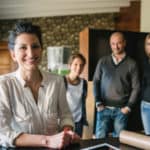You know the saying, if it walks like a duck and talks like a duck, then it’s a duck? It turns out that may not be true all of the time.
Once you have put in the hard work to create high-quality products that also resolve all of the architectural and design engineering issues, you get your products specified. You certainly don’t want to see a competitor whose products only seem the same sink your chance for the sale.
After all, what seems like a duck may not always be a duck. Let’s look at how to keep your specs—and your product sales.
Know Your Competitors’ Products
You will want to read the other product manufacturers’ marketing materials. Ask yourself, are my competitors really selling the same thing that I sell?
· Do their materials meet the same American Society for the Testing of Materials (ASTM) standards?
· Have they received the same Factory Mutual (FM) Approvals?
· Do they pass all the relevant industry standards—for example, plumbing, electrical, and HVAC?
The key issue is equality of all materials and products. The supplier’s products must meet all the standards and architectural criteria.
Remember that the architect or designers have specified your product because it meets certain ASTM standards, FM approvals, and other criteria and tests.
Understand the “Or Equals.”
To maintain a high project quality standard and provide exactly what the owner requests, contracts often specify a brand name “or equal.” Look to see whether there is an “or equal” allowed in the project. If so, does your competitor’s product pass the “or equal” test?
· Robert J. Smith, PE, Esq., a construction attorney, offers this advice: “Check the front end or boilerplate of the contract for the criteria and procedures on substitutions.”
· Smith also suggests this: As a bidder, you always should ask the project design professionals to identify the relevant characteristics of a product for each project. Never assume what they want.
· Smith cautions that a specification that does not name a particular brand but is instead “written around” a brand name is considered to be a brand name specification. In other words, you need to be able to explain to the architect why that specification is written around your product and not that of a competitor.
· Liz O’Sullivan, a spec writer, offers this tip: Locate the definition of “or equal” for each job in the Instructions to Bidders form, which usually appears in the project manual’s Division 00. Look for the section marked Product Requirements.
What if Their Product Costs Less?
Note that if your competitor’s product does not meet all the relevant criteria, then that manufacturer’s rep might be offering their product to the architect at a lower cost. If that happens, the architect should beware—the other product may not meet all the project standards and therefore may not perform as the architect and owner expect.
Defending Your Architectural Spec
Architects and design engineers are requiring products and materials that meet the owners’ specifications. They also should check which ASTM standards are relevant to what the architect is trying to accomplish in a given project.
Let the architect know that your products meet ASTM standards. Remind the architect that meeting those standards is a reason to have complete confidence that your products meet high-quality standards and are sustainable.
FM approved products meet high loss prevention standards. Be sure to remind the architect that loss prevention is a key quality component for their customers and that your products will assure owners that this standard has been met.
My blog, Do You Focus on Building Product Customers Who Are Winners or Losers?, offers tips on selling your product successfully as well.
Essentially your job is to show the architect that everything that seems to walk like a duck and talk like a duck may not really be a duck and that your products are the ones that can help keep the owners happy with the completed project.
Here’s more on How to Sell Architects
Subscribe To My Newsletter
If you like what I say, sign up for my newsletter here and get my weekly newsletter every Sunday night.









